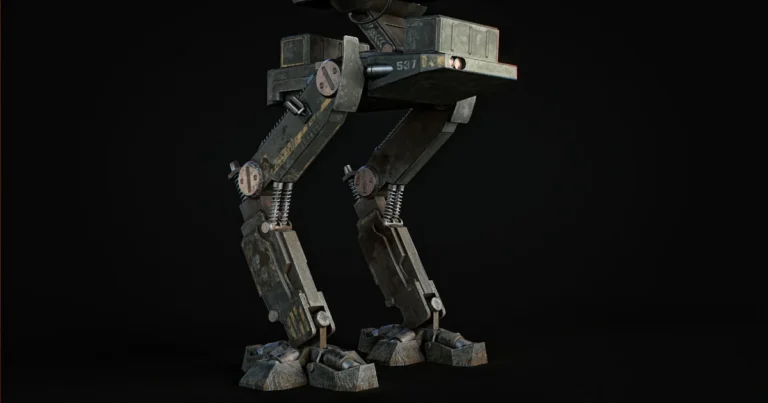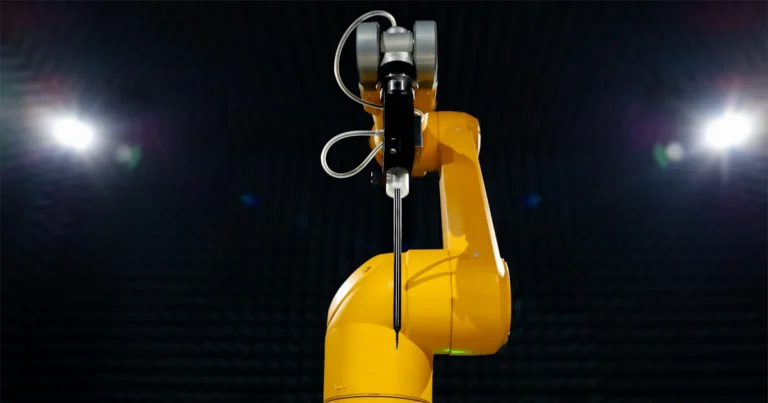Support our educational content for free when you buy through links on our site. Learn more
What Are the 5 Most Popular Robot Fighting Leagues Worldwide? 🤖 (2025)
If you think robot fighting is just about smashing metal in a garage, think again! From the thunderous BattleBots arenas in the USA to the high-tech spectacle of China’s King of Bots, robot combat has evolved into a global phenomenon that blends engineering wizardry, fierce competition, and jaw-dropping destruction. But what exactly sets these leagues apart? Which ones boast the biggest fanbases, the most innovative bots, and the wildest arenas?
In this article, we’ll take you on a whirlwind tour of the five most popular robot fighting leagues worldwide, revealing their unique rules, iconic bots, and the secret sauce behind their massive appeal. Plus, we’ll dive into the cutting-edge weaponry and design strategies that make these mechanical gladiators tick. Ready to find out which league reigns supreme and why? Keep reading — the sparks are about to fly!
Key Takeaways
- BattleBots (USA) leads with high production value, heavyweights, and iconic bots like Tombstone and Bite Force.
- Robot Wars (UK) is famous for its house robots and strategic arena hazards, shaping a generation of builders.
- King of Bots (China) combines cinematic spectacle with rapid innovation, attracting international competitors.
- RoboGames offers a diverse robotics festival, including combat, sumo, and autonomous challenges.
- Regional leagues like Japan’s DEEP CRAWLER and grassroots competitions nurture future champions.
- Understanding each league’s rules, arenas, and weaponry is key to appreciating the sport’s global diversity and appeal.
Curious about how these leagues differ and which one might inspire your next robot build? Dive into the full breakdown ahead!
Table of Contents
- ⚡️ Quick Tips and Facts: Your Robot Combat Cheat Sheet!
- 🤖 From Garage Gladiators to Global Arenas: The Electrifying Evolution of Combat Robotics
- 🏆 The Heavy Hitters: Unveiling the Most Popular Robot Fighting Leagues Worldwide
- 1. 🇺🇸 BattleBots: The Undisputed King of American Robot Combat!
- 2. 🇬🇧 Robot Wars: The UK’s Cult Classic That Defined a Generation
- 3. 🇨🇳 King of Bots & Fighting My Bots: China’s Explosive Entry into Global Robot Fighting
- 4. 🌎 RoboGames: The Olympics of Robotics – More Than Just Combat!
- 5. 🇯🇵 DEEP CRAWLER & Other Regional Powerhouses: Exploring Niche & Emerging Leagues
- 🛠️ The Art of Destruction: Combat Robot Weaponry, Armor, and Propulsion Systems Explained
- 👷♀️ Building Your Own Bot: Getting Started in the World of Robot Combat
- 🌍 The Global Impact and Future of Robot Fighting Sports
- ✅ Conclusion: Why Robot Fighting Continues to Captivate Us All
- 🔗 Recommended Links: Dive Deeper into the Robot Combat Universe
- ❓ FAQ: Your Burning Questions About Robot Fighting Answered!
- 📚 Reference Links: Our Sources for Robot Combat Wisdom
⚡️ Quick Tips and Facts: Your Robot Combat Cheat Sheet!
Welcome to the electrifying world of robot fighting! Whether you’re a seasoned builder or a curious fan, here’s a quick rundown of must-know facts before we dive deep:
- Robot fighting leagues are global, with unique rules, arenas, and fan cultures.
- Weight classes range from tiny Antweights (under 1 lb) to hulking Heavyweights (up to 250 lbs).
- Popular weapon types include spinners, flippers, crushers, and hammers.
- Safety is paramount: arenas are enclosed with bulletproof glass or steel mesh.
- The sport blends engineering, strategy, and showmanship — think gladiators with gears!
- Famous leagues include BattleBots (USA), Robot Wars (UK), and King of Bots (China).
- The National Havoc Robot League (NHRL) is the largest 3lb robot combat league worldwide.
- Combat robots must balance offense, defense, and mobility to survive and win.
- The sport inspires STEM education and innovation worldwide.
Curious about how these leagues differ and what makes each one special? Keep reading — the best is yet to come! For a quick start, check out our Robot Fighting overview for more insights.
🤖 From Garage Gladiators to Global Arenas: The Electrifying Evolution of Combat Robotics
Robot combat has come a long way since its humble beginnings in garages and basements. What started as a niche hobby has exploded into a global sport with professional leagues, televised events, and passionate fanbases.
The Spark That Ignited the Sport
- The first documented robot combat events date back to the 1980s, with small-scale competitions organized by hobbyists.
- The 1990s saw the rise of televised shows like Robot Wars (UK) and BattleBots (USA), which brought robot fighting into mainstream pop culture.
- These shows inspired thousands of builders worldwide to create their own bots, pushing engineering boundaries.
Growth and Globalization
- Today, robot fighting leagues span continents, with major hubs in North America, Europe, and Asia.
- The sport’s accessibility has improved thanks to affordable electronics, 3D printing, and online communities.
- Leagues like the National Havoc Robot League (NHRL) have democratized the sport by focusing on smaller weight classes and streaming events online.
Why We’re Hooked
- The mix of destruction, creativity, and competition is irresistible.
- Builders become engineers, strategists, and performers.
- Fans get to witness epic battles where machines clash with thunderous impact.
Want to see the evolution in action? Check out the first YouTube video embedded above for some of the most jaw-dropping KO moments in BattleBots history!
🏆 The Heavy Hitters: Unveiling the Most Popular Robot Fighting Leagues Worldwide
Ready to meet the giants of robot combat? We’ve broken down the top leagues that have shaped the sport worldwide, each with its own flavor, rules, and fan culture.
1. 🇺🇸 BattleBots: The Undisputed King of American Robot Combat!
BattleBots is arguably the most famous robot fighting league globally, thanks to its high production values, intense battles, and star-studded builder roster.
| Aspect | Rating (1-10) | Notes |
|---|---|---|
| Design & Engineering | 9 | Cutting-edge bots with innovative weaponry and armor |
| Entertainment Value | 10 | TV show with charismatic hosts, dramatic commentary, and epic battles |
| Accessibility | 7 | Heavyweight focus; smaller builders may find it challenging to enter |
| Rules & Safety | 9 | Strict regulations ensure safety without killing creativity |
| Global Reach | 9 | Broadcast on Discovery Channel and Science Channel, with international fanbase |
Rules of Engagement: How BattleBots Keeps the Sparks Flying
BattleBots matches take place in the BattleBox, a 54-foot steel arena with hazards like spinning saw blades and hammers. Robots must weigh under 250 lbs (113 kg) and fit within strict size limits.
- Matches last 3 minutes, judged on damage, aggression, control, and strategy.
- Weapons like flamethrowers and projectiles are banned for safety.
- The focus is on destructive but controlled combat.
Weight Classes & Robot Archetypes: From Featherweights to Heavyweights
While BattleBots primarily features the heavyweight class, smaller weight classes like featherweight and lightweight have their own competitions. Popular robot types include:
- Spinners: High-speed rotating blades (e.g., Tombstone)
- Flippers: Pneumatic arms that toss opponents (e.g., Bronco)
- Crushers: Hydraulic arms that pierce armor (e.g., Last Rites)
- Wedges: Defensive bots that get under opponents (e.g., Bite Force)
The BattleBox: Iconic Hazards and Arena Mayhem
The arena itself is a character, with hazards like:
- The Pulverizer: A giant hammer that smashes bots
- The Saw Blades: Spinning discs that shred armor
- The Kill Saws: Deadly circular saws embedded in the floor
These hazards add unpredictability and excitement to every match.
Legendary Bots & Builders: Who Are the Icons of the Arena?
- Tombstone: The feared horizontal spinner with devastating hits.
- Bite Force: A versatile wedge with a crushing grip.
- Hydra: A multi-weapon bot combining spinning discs and hammers.
- Builders like Donald Hutson and Paul Ventimiglia have become legends.
For detailed rules and engineering tips, visit our Robot Combat Rules and Regulations and Robot Design and Engineering categories.
2. 🇬🇧 Robot Wars: The UK’s Cult Classic That Defined a Generation
Robot Wars is the league that arguably launched the robot combat craze in the UK and beyond. Its unique style and memorable house robots made it a fan favorite.
The Gauntlet: Unique Rules and the House Robots’ Reign of Terror
- Matches took place in an arena with hazards like the Pit, Flame Pit, and House Robots—giant, heavily armored bots that could attack competitors.
- The presence of House Robots added a thrilling layer of danger and strategy.
- The format included tournaments, special challenges, and team battles.
Design Philosophy: What Made UK Bots Different?
- UK bots often emphasized durability and control over pure destructive power.
- Many used flippers and lifters to toss opponents into hazards.
- The arena encouraged creative strategies to avoid House Robots and environmental dangers.
Fan Favorites and Unforgettable Moments
- Razer: Famous for its crushing claw.
- Chaos 2: Known for its powerful flipper.
- Hypno-Disc: A destructive spinner that terrified opponents.
- The show’s revival in 2016 brought new life to the classic format.
For more on Robot Wars’ rules and engineering, see our Robot Combat Rules and Regulations and Robot Combat Videos.
3. 🇨🇳 King of Bots & Fighting My Bots: China’s Explosive Entry into Global Robot Fighting
China’s robot fighting scene has rapidly grown, with high-budget productions and a focus on innovation.
High Stakes, High Production: The Chinese Combat Robot Phenomenon
- Shows like King of Bots and Fighting My Bots feature cinematic production, large arenas, and intense battles.
- The leagues attract international competitors and showcase cutting-edge technology.
- Prize pools and sponsorships are growing, fueling rapid development.
Rules and Robot Diversity: A Blend of East and West
- Chinese leagues blend rules from BattleBots and Robot Wars, allowing some unique weaponry and tactics.
- Weight classes vary, with a focus on middleweight and heavyweight divisions.
- The emphasis is on spectacle and innovation, with some bots featuring autonomous elements.
4. 🌎 RoboGames: The Olympics of Robotics – More Than Just Combat!
RoboGames is a massive event that includes robot combat alongside many other robotics disciplines.
Diverse Disciplines: From Sumo to Full Combat
- Combat robots compete in multiple weight classes.
- Other events include robot sumo, line following, and autonomous challenges.
- The event fosters cross-disciplinary innovation.
The Open-Source Spirit: Innovation and Community at its Best
- RoboGames encourages sharing designs and ideas.
- Many builders use open-source software and hardware.
- The event is a melting pot of hobbyists, professionals, and students.
5. 🇯🇵 DEEP CRAWLER & Other Regional Powerhouses: Exploring Niche & Emerging Leagues
While the big leagues dominate headlines, smaller and regional leagues offer unique flavors and opportunities.
Japan’s Unique Approach to Robot Fighting
- Leagues like DEEP CRAWLER focus on innovative locomotion and robot design.
- Japanese bots often emphasize precision and agility.
- Events blend entertainment with technical challenges.
Grassroots & Amateur Leagues: Where Future Champions Are Forged
- Local and university leagues worldwide nurture new talent.
- These leagues often have lighter weight classes and more relaxed rules.
- They serve as incubators for future BattleBots and Robot Wars stars.
For aspiring builders, check out our DIY Robot Building and Robot Building Guides for tips and tutorials.
🛠️ The Art of Destruction: Combat Robot Weaponry, Armor, and Propulsion Systems Explained
What makes a robot a champion? It’s all about the deadly mix of weapons, armor, and movement. Let’s break down the essentials.
Spinners, Flippers, & Crushers: A Deep Dive into Destructive Design
| Weapon Type | Description | Pros | Cons | Famous Examples |
|---|---|---|---|---|
| Spinner | High-speed rotating blade or drum | Massive damage, can disable opponents quickly | Requires precise engineering, vulnerable to control bots | Tombstone (BattleBots), Hypno-Disc (Robot Wars) |
| Flipper | Pneumatic arm that flips opponents | Can toss bots out of arena or into hazards | Limited damage, relies on arena design | Bronco (BattleBots), Chaos 2 (Robot Wars) |
| Crusher | Hydraulic arm that pierces armor | Devastating damage, can immobilize bots | Slow, heavy, complex hydraulics | Razer (Robot Wars), Last Rites (BattleBots) |
| Wedge | Sloped armor to get under opponents | Great defense, control-oriented | Limited offensive power | Bite Force (BattleBots) |
Why Weapon Choice Matters
- Your weapon defines your strategy and build complexity.
- Spinners demand strong chassis and batteries.
- Flippers rely on pneumatics and arena hazards.
- Crushers require powerful hydraulics and precision.
Defensive Strategies: The Science of Surviving a Robot Brawl
- Armor Materials: Titanium, hardened steel, and polycarbonate are common.
- Shape: Low-profile wedges and smooth surfaces help deflect hits.
- Mobility: Fast, agile bots can dodge attacks and control the fight.
- Redundancy: Multiple weapon systems and backup electronics improve survivability.
Beyond Wheels: Exploring Unusual Propulsion and Movement Systems
While wheels dominate, some bots experiment with:
- Tracks: Better traction on rough terrain.
- Legs: Seen in experimental bots for agility.
- Omni-wheels: Allow strafing and complex maneuvers.
- Gyroscopic Spinners: Bots like Melty-Brain use rotational movement for locomotion.
These systems can surprise opponents but add engineering challenges.
👷♀️ Building Your Own Bot: Getting Started in the World of Robot Combat
Thinking of joining the fray? Here’s how to get started on your robot fighting journey.
Choosing Your Weight Class: Antweights, Beetlewights, and Beyond!
| Weight Class | Max Weight | Typical Use | League Examples |
|---|---|---|---|
| Antweight | 1 lb (0.45 kg) | Beginner-friendly, fast builds | NHRL, FRA |
| Beetleweight | 3 lb (1.36 kg) | Intermediate, more weapon options | NHRL, RoboGames |
| Featherweight | 30 lb (13.6 kg) | Advanced, serious competition | BattleBots, RoboGames |
| Heavyweight | 250 lb (113 kg) | Professional, high power | BattleBots |
Start small to learn basics, then scale up as skills grow.
Essential Tools and Components for Aspiring Robot Builders
- Tools: Soldering iron, drill press, Dremel rotary tool, multimeter.
- Components: Motors (e.g., HobbyKing, VEX Robotics), batteries (LiPo preferred), speed controllers, radio transmitters.
- Materials: Aluminum, polycarbonate, steel sheets.
- Software: CAD programs like Fusion 360, control software for radio systems.
Safety First! Crucial Considerations for Robot Construction and Operation
- Always wear eye protection and gloves when building.
- Follow battery safety protocols to avoid fires.
- Test weapons in controlled environments.
- Use fail-safes in radio control systems.
- Comply with league rules to ensure safe competition.
For detailed guides, visit our DIY Robot Building and Robot Building Guides sections.
🌍 The Global Impact and Future of Robot Fighting Sports
Robot fighting is more than just entertainment — it’s shaping technology, education, and culture worldwide.
Technology Transfer: How Robot Combat Pushes Engineering Boundaries
- Innovations in battery tech, motor efficiency, and materials science often originate in combat robotics.
- Builders develop custom electronics and control algorithms.
- These advances trickle into industrial robotics and automation.
The Rise of AI and Autonomous Combat: What’s Next?
- Some leagues experiment with autonomous bots using AI for targeting and movement.
- Challenges include real-time decision-making and opponent prediction.
- Could future robot fights be fully autonomous? The race is on!
Inspiring the Next Generation of STEM Enthusiasts
- Robot combat leagues actively promote STEM education through scholarships and workshops.
- Events like NHRL’s $2 million STEM grants highlight the sport’s educational impact.
- Building and battling bots teach valuable skills in engineering, programming, and teamwork.
✅ Conclusion: Why Robot Fighting Continues to Captivate Us All
After cruising through the electrifying arenas of robot fighting leagues worldwide, it’s clear why this sport has captured the hearts of engineers, fans, and dreamers alike. From the thunderous hits in BattleBots’ BattleBox to the strategic flips and house robot showdowns in Robot Wars, each league offers a unique flavor of mechanical mayhem that keeps us on the edge of our seats.
What makes these leagues so popular? It’s the perfect storm of engineering ingenuity, competitive spirit, and spectacular destruction. Whether you’re a builder crafting your first antweight or a fan cheering for the legendary Tombstone or Razer, the thrill is universal.
We teased earlier about how these leagues differ and what makes each one special. Now you know: it’s about the rules, the arena hazards, the weaponry, and the community culture. From China’s high-production King of Bots to the grassroots charm of regional leagues, robot fighting is a global phenomenon with room for everyone.
If you’re inspired to join the fray, start small, learn the ropes, and embrace the engineering challenges. The world of robot combat is waiting — and trust us, once you hear that first clank and see sparks fly, you’ll be hooked for life.
Ready to dive deeper? Check out our recommended links below for gear, guides, and more!
🔗 Recommended Links: Dive Deeper into the Robot Combat Universe
Looking to gear up or learn more? Here are some top picks from the Robot Fighting™ team:
- BattleBots Official Website: battlebots.com
- National Havoc Robot League (NHRL): nhrl.io
- Robot Wars Official (BBC): bbc.co.uk/robotwars
- King of Bots (YouTube Channel): King of Bots
👉 Shop Robot Combat Essentials:
- Motors & Controllers:
- Batteries (LiPo):
- Tools for Builders:
- Books on Robot Combat & Engineering:
- Robot Builder’s Bonanza by Gordon McComb: Amazon Link
- Combat Robot Weapons: Design and Construction by Aaron Joerger: Amazon Link
❓ FAQ: Your Burning Questions About Robot Fighting Answered!
How do robot fighting leagues promote STEM education?
Robot fighting leagues serve as hands-on platforms for learning science, technology, engineering, and math (STEM). By designing, building, and programming combat robots, participants develop practical skills in mechanical engineering, electronics, and computer science. Leagues like the National Havoc Robot League actively offer scholarships and STEM grants, encouraging youth involvement. Competitions also foster teamwork and problem-solving, making STEM accessible and exciting.
What technology is used in competitive robot fighting?
Competitive robots use a blend of technologies including:
- Brushless motors for efficient and powerful movement.
- LiPo batteries for high energy density.
- Radio control systems for precise operator commands.
- Pneumatics and hydraulics for weapon actuation.
- CAD software (e.g., Fusion 360) for design.
- Advanced materials like titanium and polycarbonate for armor.
- Emerging use of AI and sensors for autonomous or semi-autonomous functions.
Who are the most famous robot fighters in the world?
Some iconic builders and their bots include:
- Donald Hutson (Tombstone, Bite Force)
- Paul Ventimiglia (Bronco)
- Carson and Chris Koss (Hydra)
- UK legends like Chris Rose (Razer) and Caroline Pearce (Chaos 2)
- Rising stars from China’s King of Bots league.
These builders have shaped the sport with innovative designs and memorable battles.
What types of robots compete in major fighting leagues?
Robots are generally classified by weight and weapon type:
- Spinners: Rotating blades or drums that deliver high-impact hits.
- Flippers: Pneumatic arms that toss opponents.
- Crushers: Hydraulic claws that pierce armor.
- Wedges: Defensive bots designed to get under opponents.
- Hybrid designs: Combining multiple weapon types for versatility.
Weight classes range from tiny Antweights (~1 lb) to massive Heavyweights (up to 250 lbs).
What are the rules in the top robot fighting competitions?
Rules vary but share core principles:
- Safety first: No explosives, firearms, or hazardous weapons.
- Weight and size limits strictly enforced.
- Matches typically last 3 minutes.
- Judging criteria include damage, aggression, control, and strategy.
- Weapons like flamethrowers and projectiles are usually banned.
- Arenas have hazards and safety enclosures.
For detailed rules, see Robot Combat Rules and Regulations.
Which countries have the largest robot fighting leagues?
- United States: Home to BattleBots, NHRL, RoboGames.
- United Kingdom: Robot Wars and Fighting Robots Association events.
- China: King of Bots and Fighting My Bots.
- Japan: DEEP CRAWLER and regional leagues.
- Other countries with growing scenes include Canada, Germany, and Australia.
Which robot fighting leagues have the largest global fanbase?
- BattleBots holds the largest international TV audience, broadcast on Discovery Channel.
- Robot Wars has a cult following in the UK and Europe.
- King of Bots attracts millions of viewers across Asia and online.
- RoboGames appeals to a diverse global audience with multiple robotics disciplines.
How do robot fighting leagues differ around the world?
Differences include:
- Arena design: BattleBots’ BattleBox vs. Robot Wars’ hazard-filled pit.
- Rules: Some leagues allow limited flame or liquid weapons; others ban them outright.
- Weight classes: Varying limits and categories.
- Cultural flavor: Chinese leagues emphasize spectacle; UK leagues focus on strategy and house robots.
- Broadcast style: From reality TV to live Twitch streams.
What are the top robot fighting competitions to watch online?
- BattleBots: Official YouTube channel and Discovery+ streaming.
- Robot Wars: BBC iPlayer and YouTube highlights.
- NHRL: Twitch streams and YouTube.
- King of Bots: YouTube channel with English subtitles.
- RoboGames: Twitch and official website streams.
Who are the leading teams in international robot fighting leagues?
- Team Bite Force (USA)
- Team Tombstone (USA)
- Team Razer (UK)
- Team Hydra (USA)
- Team King of Bots (China)
- Many grassroots teams emerging globally.
What rules and regulations govern major robot fighting leagues?
- Most leagues follow guidelines from regulatory bodies like the Fighting Robots Association (FRA) and Standardised Procedures for the Advancement of Robot Combat (SPARC).
- Rules cover weapon restrictions, safety protocols, weight classes, and match conduct.
- Leagues publish detailed rulebooks online; builders must comply to compete.
How can I join or participate in a robot fighting league?
- Start by building a small bot in a beginner-friendly weight class like Antweight or Beetleweight.
- Join local or online communities (e.g., Robot Fighting™ forums).
- Enter grassroots competitions or leagues like NHRL’s 3lb events.
- Study league rules and safety guidelines.
- Attend events to network and learn from experienced builders.
What are the most popular robot designs in competitive leagues?
- Horizontal spinners are fan favorites for their destructive power.
- Flippers excel in arenas with hazards.
- Crushers offer brutal close-range damage.
- Wedges dominate control and defense.
- Hybrid bots combining multiple weapon types are increasingly common.
📚 Reference Links: Our Sources for Robot Combat Wisdom
- BattleBots: Home
- National Havoc Robot League (NHRL) About
- Robot Wars (BBC)
- Wikipedia: Robot Combat
- Fighting Robots Association (FRA)
- Standardised Procedures for the Advancement of Robot Combat (SPARC)
- Robot Fighting™ – Robot Combat Rules and Regulations
- Robot Fighting™ – Robot Design and Engineering
- Robot Fighting™ – DIY Robot Building
- Robot Fighting™ – Robot Combat Videos
- Robot Fighting™ – Robot Building Guides
Ready to build, battle, or just binge-watch? The world of robot fighting awaits your spark! ⚔️🤖🔥






